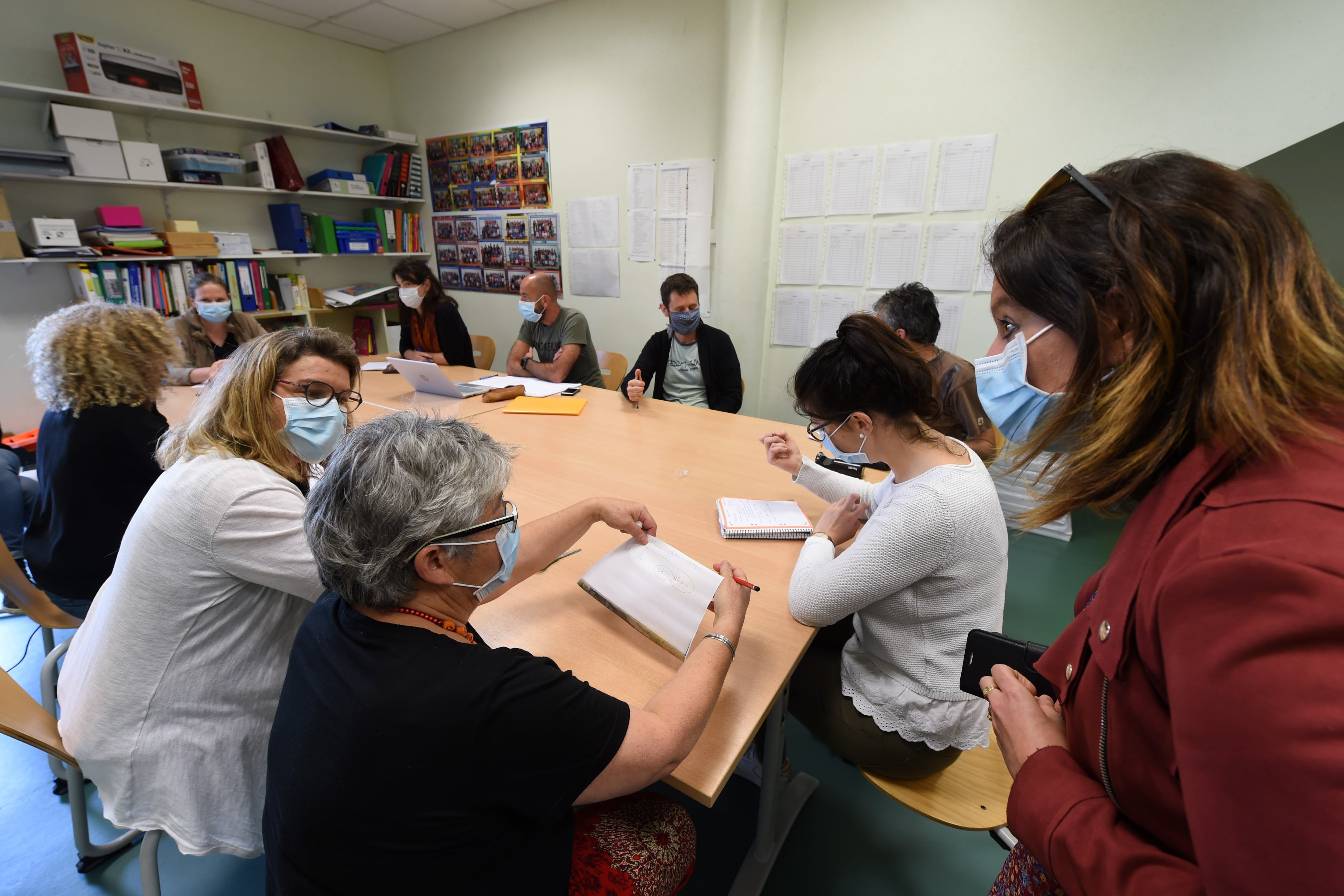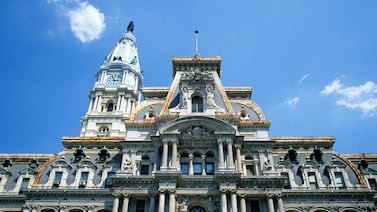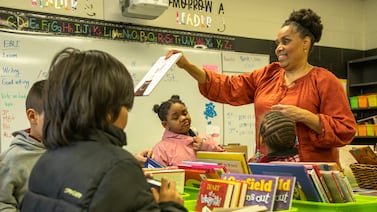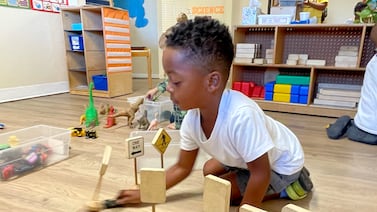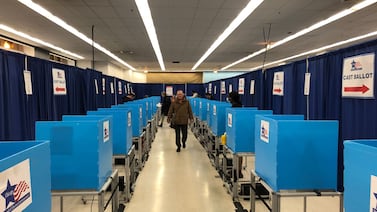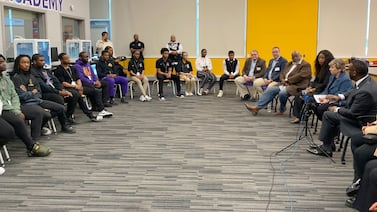Belinda Mckinney-Childrey has spent more than 30 years as a teacher. Before the pandemic, she thought she was about three years from retirement.
Coronavirus has her wondering whether to fast-track that decision. She has high blood pressure, a health condition that could put her at a higher risk for severe illness if she were to contract the coronavirus. A few weeks shy of her 62nd birthday, she’s close to the age group that the federal government has also warned is at higher risk.
And she wonders if social distancing could really work in her class when school buildings eventually reopen. She teaches sixth, seventh, and eighth grade students with autism and intellectual disabilities in Chicago, a job where close contact with students is just the daily reality. She’s willing to keep teaching remotely, but without a vaccine, she’s not sure it would be safe to step foot in her school.
“It’s very scary right now,” she said. “I can’t chance my health to go back. I love my job, I love what I do, but when push comes to shove, I think the majority of us will be like ‘I think we’re going to retire.’”
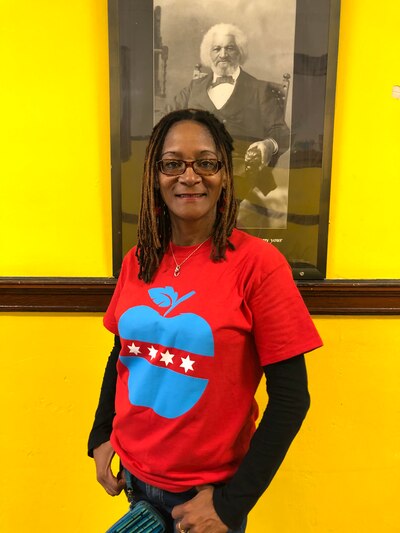
Across the country, teachers who are older or medically vulnerable — or who are afraid of putting a family member at risk — are beginning to weigh those risks. Though schools in most places have closed their doors for the school year, the federal government, states, and cities are all beginning to outline conditions for reopening school buildings. Meanwhile, testing is lagging, and there is new evidence to suggest children can transmit the virus.
That leaves school districts to grapple with a big problem on the horizon: what to do if buildings are open, but many teachers and staffers don’t feel safe coming in.
“What is super complicated is this question of, who decides if it’s safe for these teachers to come back?” said John Bailey, who co-authored a new report for the American Enterprise Institute about the challenges the coronavirus presents for staffing schools. “What happens if a school says we believe it’s safe and a teacher believes it’s not? How does that get arbitrated and resolved? I don’t think there’s clear systems and processes there yet.”
About one in five of the nation’s public school teachers are 55 or older, according to the AEI report, which relies on federal data from 2017-18. The rate is even higher in private schools, where about one in four teachers is in that group. Among principals, more than a quarter are over 55.
That may be an overstatement of those in the highest-risk age group, which the Centers for Disease Control and Prevention defines as those 65 and older. But other analyses show that those in their 50s and 60s are at higher risk than younger adults, and those numbers don’t account for the educators with other health concerns or with high-risk family members. Teachers who live in communities that have been hardest hit by the pandemic — in many parts of the country, black Americans are disproportionately dying from the disease caused by the coronavirus — may also be more concerned about returning.
It’s an issue even President Trump has noted.
“I do worry about teachers at a certain age,” he said at a recent virtual town hall. “If you have a teacher that’s 65 or 70 years old and has diabetes, that one, I think, they’re going to have to sit it out for a little while.”
If many of those teachers reject the idea of returning to school buildings before a vaccine has been developed, or at minimum before widespread testing has become available, it will affect how districts serve students, perhaps tipping the scales in favor of a scenario where some students attend school online. It could also mean more unexpected costs for districts already stretched thin.
The report from AEI, a right-leaning think tank, suggests districts consider offering early retirement incentives as well as creating new roles for teachers and principals that allow them to keep working remotely.
The remote-work option has also been promoted by the American Federation of Teachers, which said recently that districts should look into those offerings for staff who are 65 or older or who have chronic health conditions.
If older teachers leave, their replacements would likely cost districts less. But filling those roles will be a recruitment challenge. Research on early retirement incentives has also found they are not always cost-savers.
“I don’t see any way for this scenario not to be a cost driver,” Bailey said.
In some places, what options are available to teachers will likely depend on union action. Both the AFT and the National Education Association have said schools shouldn’t reopen until there is more widespread testing and contract tracing for the coronavirus, and have raised the possibility that teachers could strike or protest if they are sent back to buildings too soon.
Some of the country’s largest local teachers unions have already said vulnerable teachers will play a role in their decision-making.
“The issues of medically vulnerable and older employees are certainly part of the discussions around how school buildings can safely re-open,” a spokesperson for the New York City teachers union said. At least 72 New York City education department staffers have died as a result of the coronavirus, including 28 teachers and 28 paraprofessionals.
Similarly, the head of the Chicago Teachers Union, Jesse Sharkey, said he’d heard concerns from teachers about schools reopening too soon. In that city, two public school employees or service vendors have died. But he said his union wasn’t interested in “trying to usher teachers out of the classroom with retirement.”
“We will be acting like a union to demand bargaining and to demand the safety of our members is taken into account,” he said.
The head of New Mexico’s NEA affiliate, Mary Parr-Sanchez, said offering early retirement wouldn’t be a good option for her state, which is already facing a shortage of teachers. And asking teachers to continue teaching remotely will be difficult, too. Few districts in her state were set up with the tools they needed to make the switch to distance learning, she said, and some parts of the state, like the Navajo Nation in the northwest, have low rates of access to the internet.
Right now, her union is hoping that the terms for reopening schools will be a mandatory subject of collective bargaining under state law. But not all teachers in her state bargain over their contracts, which could leave some with fewer protections. One-quarter of New Mexico’s public teachers are 55 and older, which the AEI report notes is tied for the highest rate in the country.
“We have some real challenges with going back to school, and especially with an older population of teachers,” Parr-Sanchez said. “It’s not going to be a one-size-fits-all proposition.”
Matt Barnum contributed reporting.


